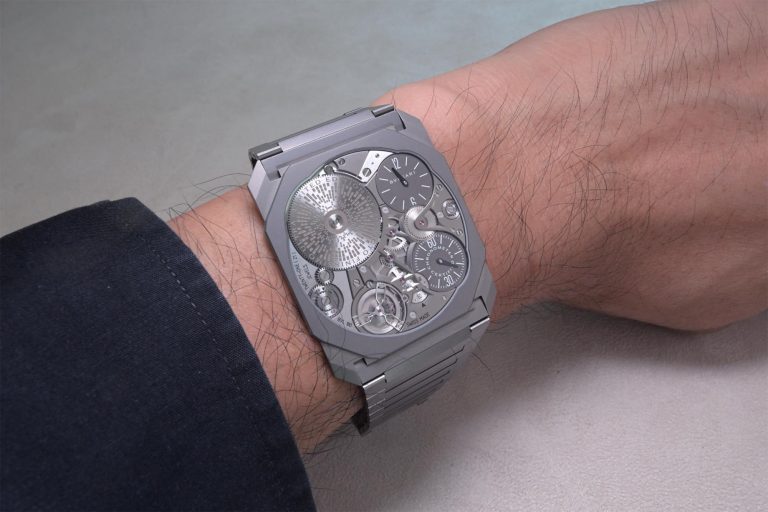The irascible and innovative genius and engine behind Bulgari’s beautiful creations, Fabrizio Bounamassa Stigliani is always both a pleasure and inspiration to talk to. ISOCHRONO met with him at the Bulgari enlivened rooms of the Hotel Wilson during the week of Watches and Wonders 2024. We spoke about the ideas and inspirations behind the 2024 releases.
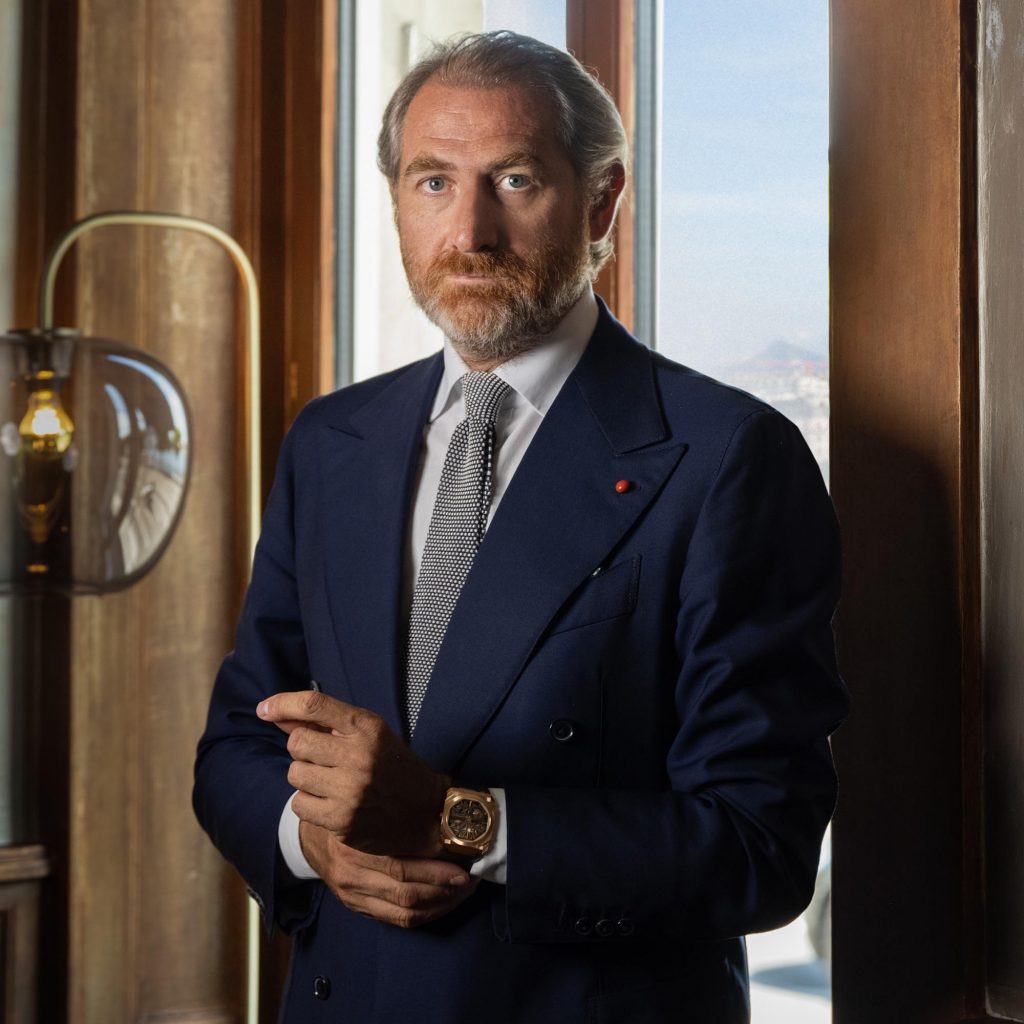
ISOCHRONO: Ciao Fabrizio, looking impeccably turned out as usual. Would you take us through the novelties of Bulgari watches for 2024?
Fabrizio Bournamassa (FB):
So we have the Tubogas, which we collaborated on with Tadao Ando; and we have the fantastic Octo Finissimo Ultra, in which we have the world record for thinness (1.70mm thin) which is also, notably this time, COSC certified. The watch is also in a version made in platinum, which was the first Ultra that we presented two years ago. For this latest version, the development process was very hard because we completely redesigned the watch from scratch due to the change in material from platinum to titanium.
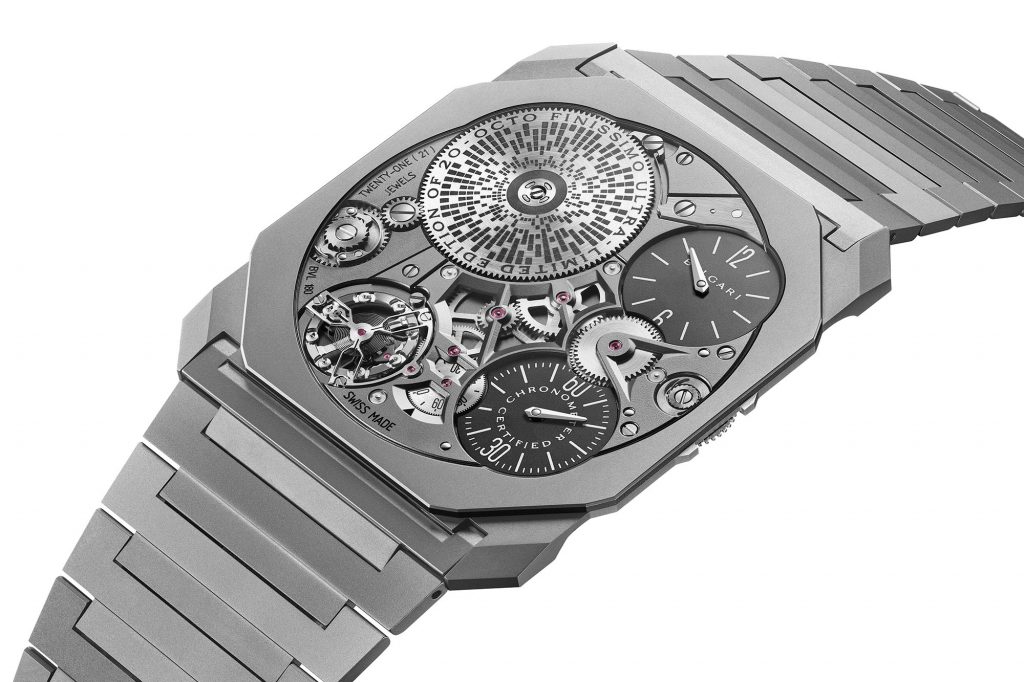

We spent one year and a half to create the bracelet, more or less the same time we used to create the movement of the Octo Finissimo Ultra that is up to COSC certification standards. It was more or less two years, all in all to develop.
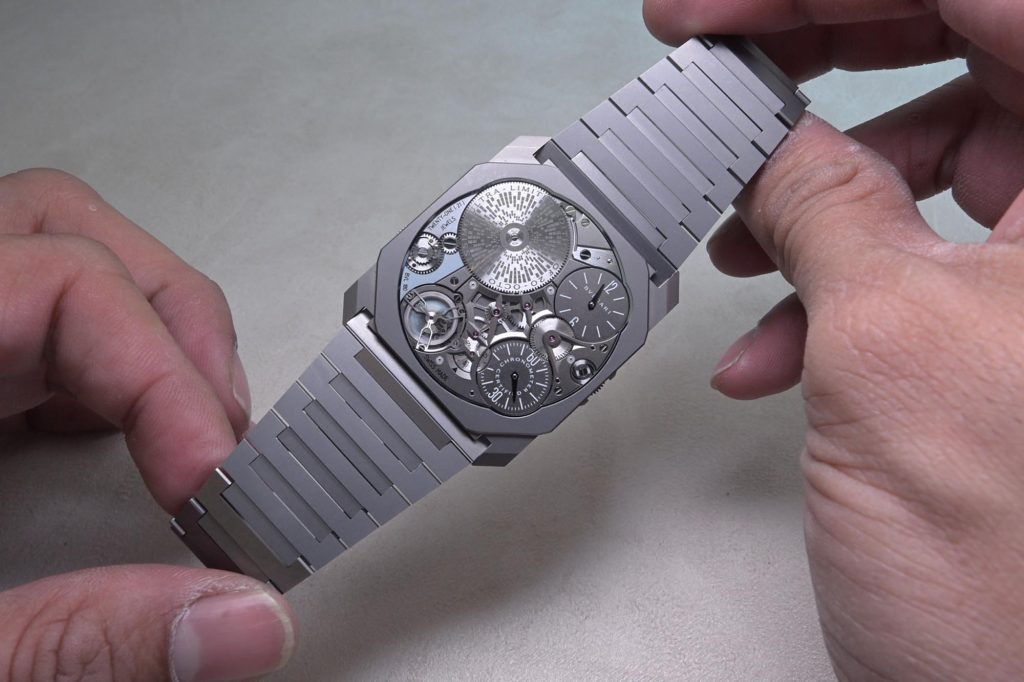
ISOCHRONO: What was the reason why you decided to make an COSC Certified Ultra?
We had a little bit of margin when we produced the first Octo Finissimo Ultra which was very successful. So at the time, we were satisfied. After six months though, we decided that we wanted to maximize the small margin we had to further develop the watch to see how far we could go.
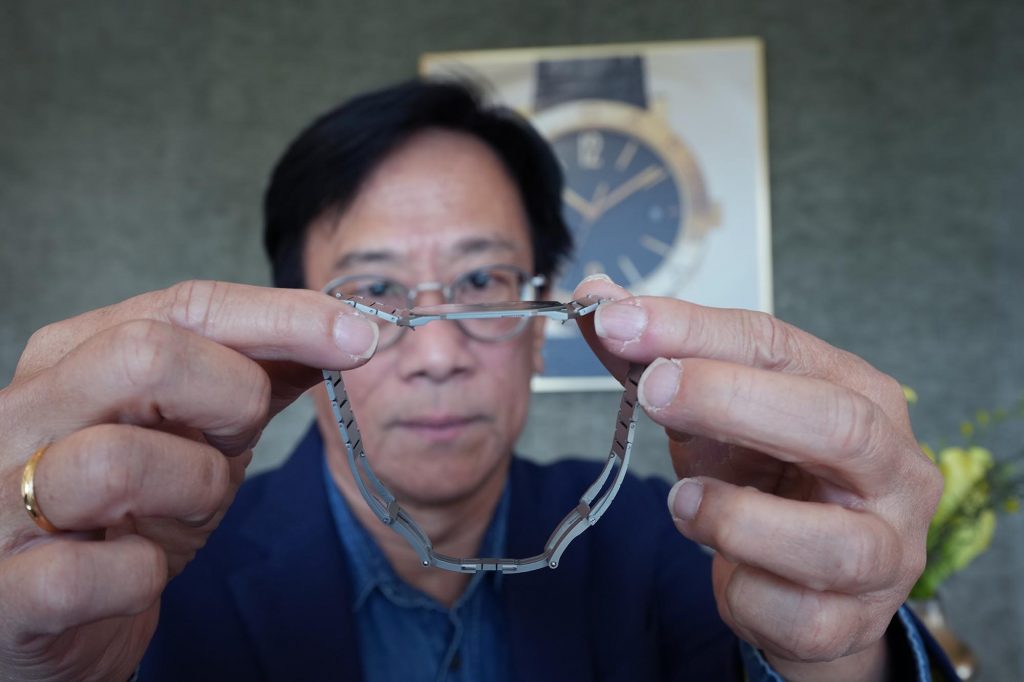
Due to the fact that COSC certification demands that every single movement is tested, we were obligated to test every single watch because as you know, with the Octo Finissimo Ultra, it is not possible to separate the movement from the case due to the unique design of having the movement components on the movement plate itself, which is also effectively the case of the watch.
ISOCHRONO: Can you clarify what you mean by ‘margin’?
FB: Yeah, margin means that we had at the time, we had a little bit of room in and around the case.
So the idea at first was to be satisfied and to say enough because we are already unique. But we realized that we could make the watch even thinner. We had initially left the margin because we had some ideas, for example, that we could make the watch with other dials, or to have different finishing possibilities.

So on the Octo Finissimo Ultra each component is extreme in terms of thinness. However we wanted it to be a safe watch that you can wear every day. But the origin of the idea is saying, “guys, if you want to change the material, if you want to have another kind of dial, please leave us some millimeters in the case to play with these kind of elements.”
ISOCHRONO: Is the Ultra and the Ultra COSC materially the same watch?
FB: It is essentially same watch but with slightly different thickness due to the difference in material used
ISOCHRONO: What’s the difference in material?
The case of the Ultra COSC is titanium, whereas the case of the second Ultra is in platinum. The platinum version at 1.8mm is thicker than the COSC version at 1.7mm. Take note that for both, the movements in these watches are only 1.5mm thick.
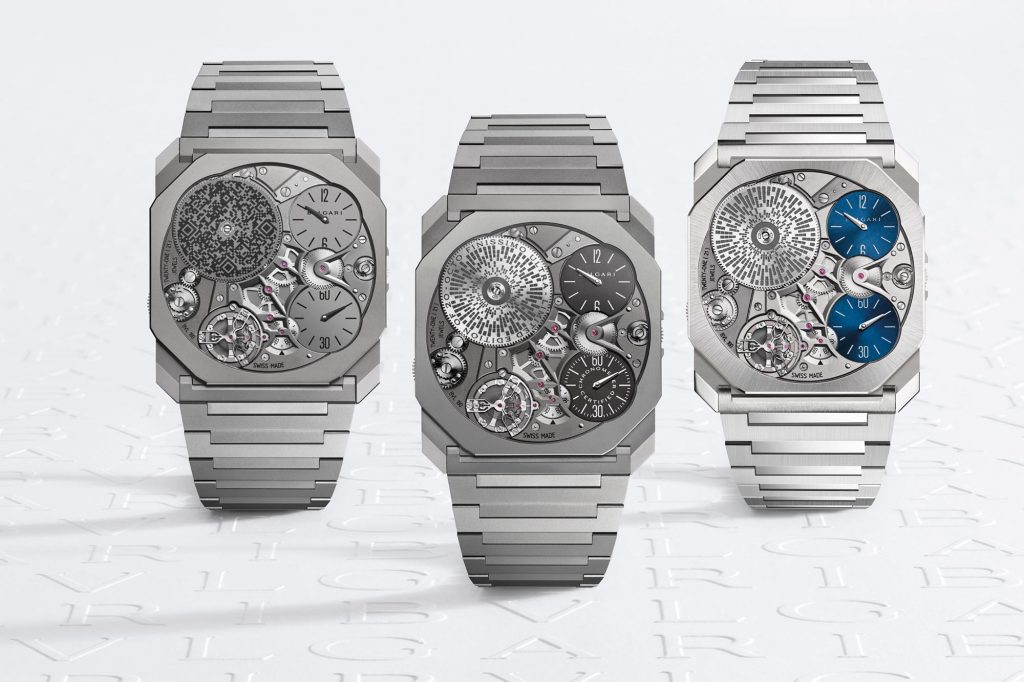
So today we already have three different Octo Finissimo Ultra. We have the first one with the QR code made in tungsten carbide and titanium. Secondly we have the Ultra COSC that is thinner than the titanium one – the same material, titanium and tungsten carbide but thinner (1.7mm). Thirdly we have the platinum one which is the thickest (1.8mm) due to the use of platinum.
Do you know how heavy the platinum version is? 200 grams, which is pretty heavy, because the bracelet is made of platinum too, with the exception of the buckle, which is in titanium, due to the fact that we need a certain rigidity for the buckle. The bracelet is in platinum, the case is in platinum, the central part of the case is in tungsten carbide and the bezel is in platinum.
ISOCHRONO: What did you have to do to achieve the COSC certification?
Honestly, this is a technical question. We have to check with the product development director to get specific on this. However, as I remember, this was not a big achievement for us honestly. We never considered that COSC certification for the Octo Finissimo was a priority.
When I joined the company more than 20 years ago, a lot of sports watches on the market had COSC certification as a standard feature. At the time, it seemed that every single brand was offering this for their watches. From our point of view, it was something that was not interesting anymore for the client.
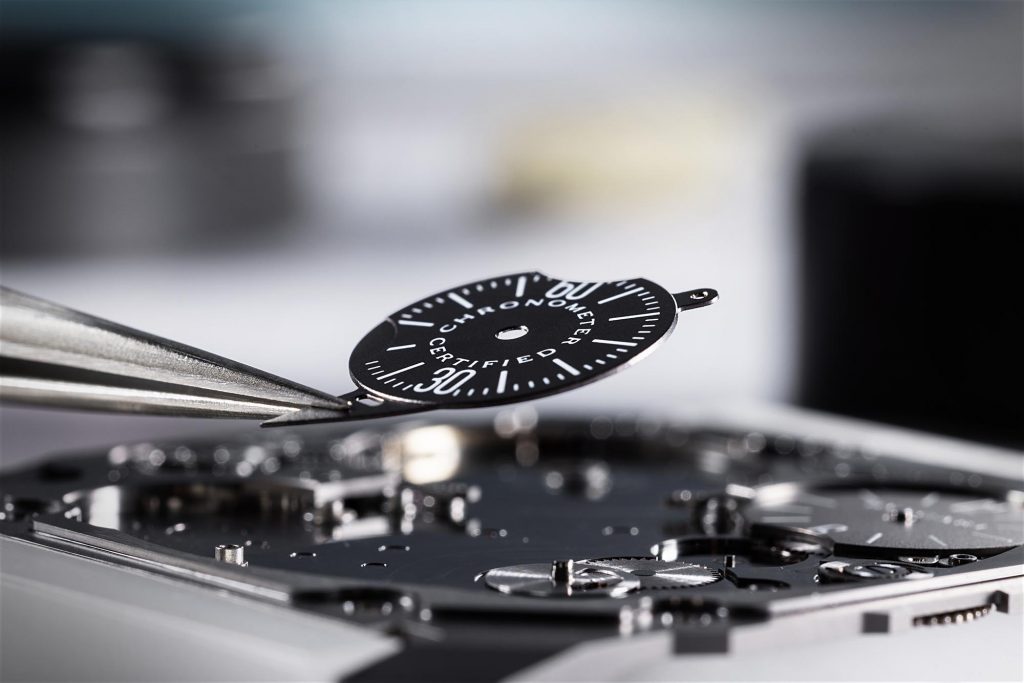
However, with the kind of watchmaking that the Ultra represents, we felt that, if it had COSC certification, it would mean that the watch is not only the thinnest on the market, but it’s also one with the most precise and stable movement.
So I discussed it yesterday with friends of mine and they said, “Yes, Fabrizio, the watch is beautiful, but the COSC certification is something that nobody would expect.” Nobody can imagine this kind of movement in such a slim watch. In addition I have to mention: the packaging is something special.
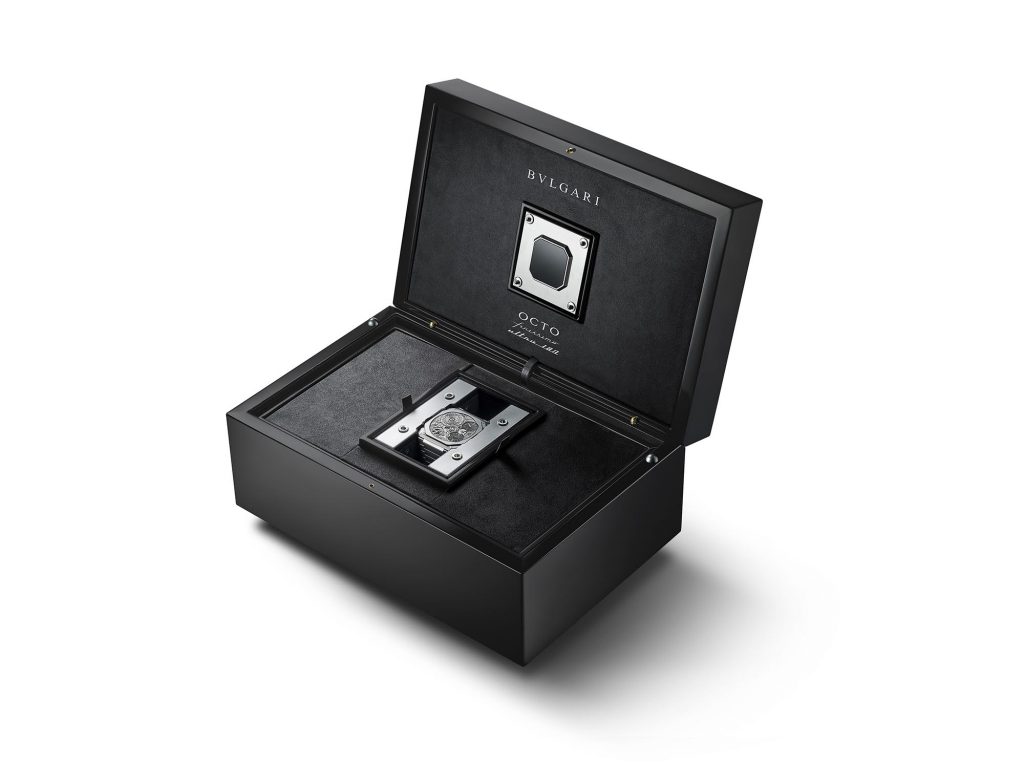
Each watch is going to have the COSC certificate in the packaging. When you leave the watch to rest, you put it inside the packaging, you close the packaging, there is a camera to read the time. If it’s not correct, there is a mechanism in the packaging to set the time and charge the barrel. The watch can also be wound via a crown on the underside of the case.
ISOCHRONO: Incredible! Tell us about the Octo Finissimo Tourbillon Skeleton.
The Octo Finissimo Tourbillon is a new execution with different colors, different materials, but the movement is the same as the previous version. Yes, it’s just a different execution with a movement that we already have. There are three executions: two hand wound 42mm versions in DLC-Coated titanium or 18K rose gold, at just 4.85mm thick with 52 hours power reserve. Another version is the automatic DLC model with platinum case, thickness of 4.95mm.
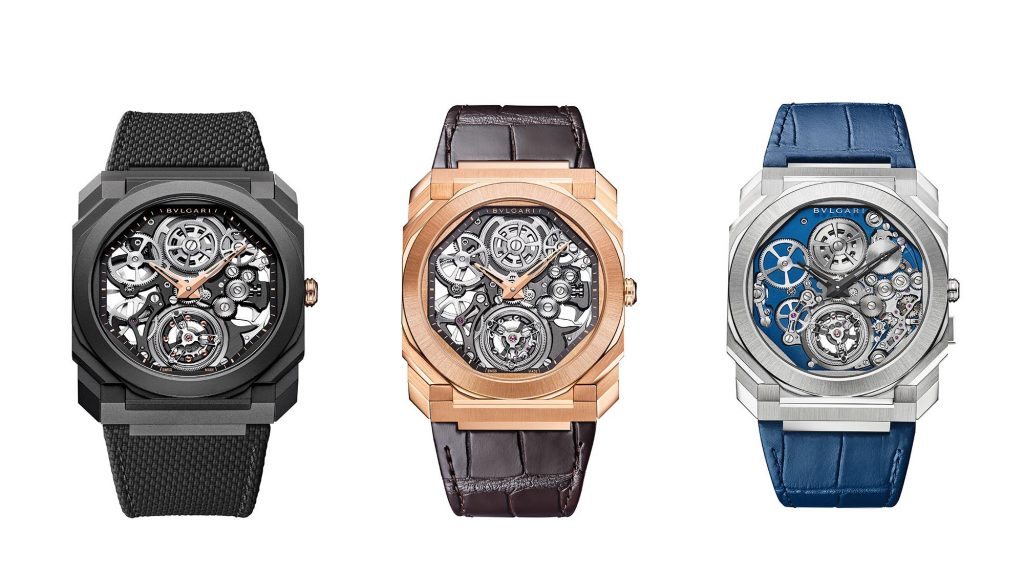
We also presented the Octo Finissimo Sketch celebrating Bulgari’s 140th anniversary, bringing a hand drawn version of the movement and representing it on the dial. Available in 40mm time only in steel and in 18K rose gold. It also comes in a 43mm chronograph GMT steel edition.
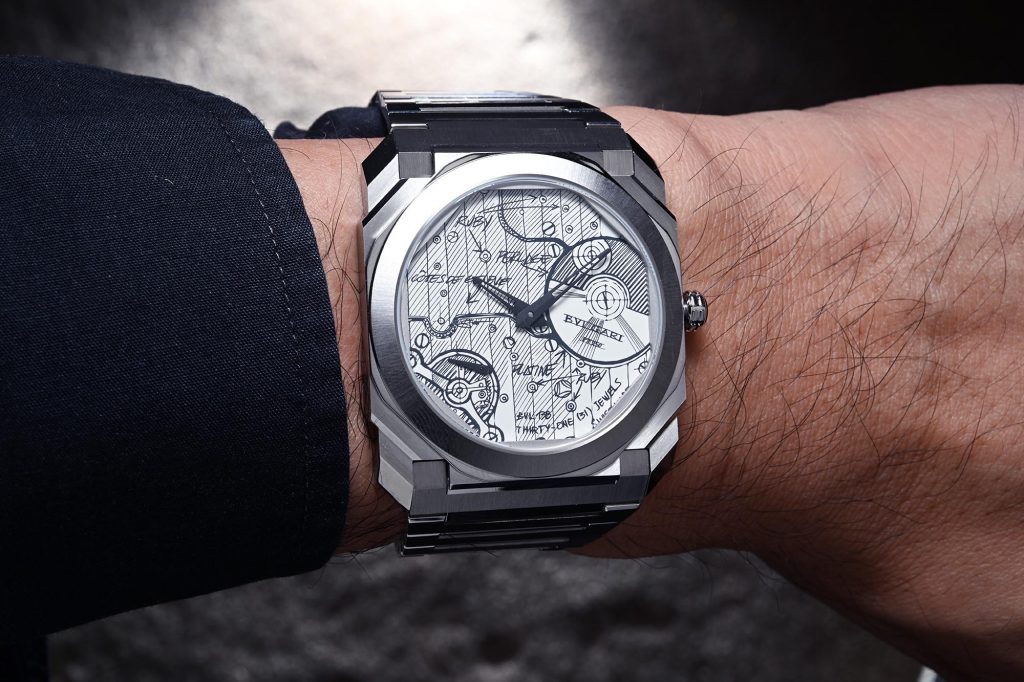
Each time for us, it’s important to have different materials; to keep working on materials and execution. For sure, in our pipeline, we even have new movements for Octo. We have very important developments on the Octo. We have different materials etc. We are working very, very hard on the Octo Finissimo platform. In the near future, you will have a lot of surprises. Very, very interesting surprises!
ISOCHRONO:You like Japan a lot, I believe. So Tadao Ando has done a lot with Bulgari. Tell us about this collaboration.
FB: We met each other the first time when working on the special edition Octo Finissimo Tadao Ando. This time Tadao had the idea to work with Bulgari on the theme of nature. He came to us with a very wide brief, with no specific idea about what the watch would be yet.
At the beginning we started with a certain watch and after a while we were not happy with the progress.
So we decided to go ahead with the Serpenti Tubogas because it’s the most natural watch for this idea. The idea of Tadao was to celebrate nature through the four seasons.
So we started to discuss that internally. The Serpenti Tubogas is the most iconic watch that we have, and its interesting that we have never made a collaboration with our ladies’ watches before.
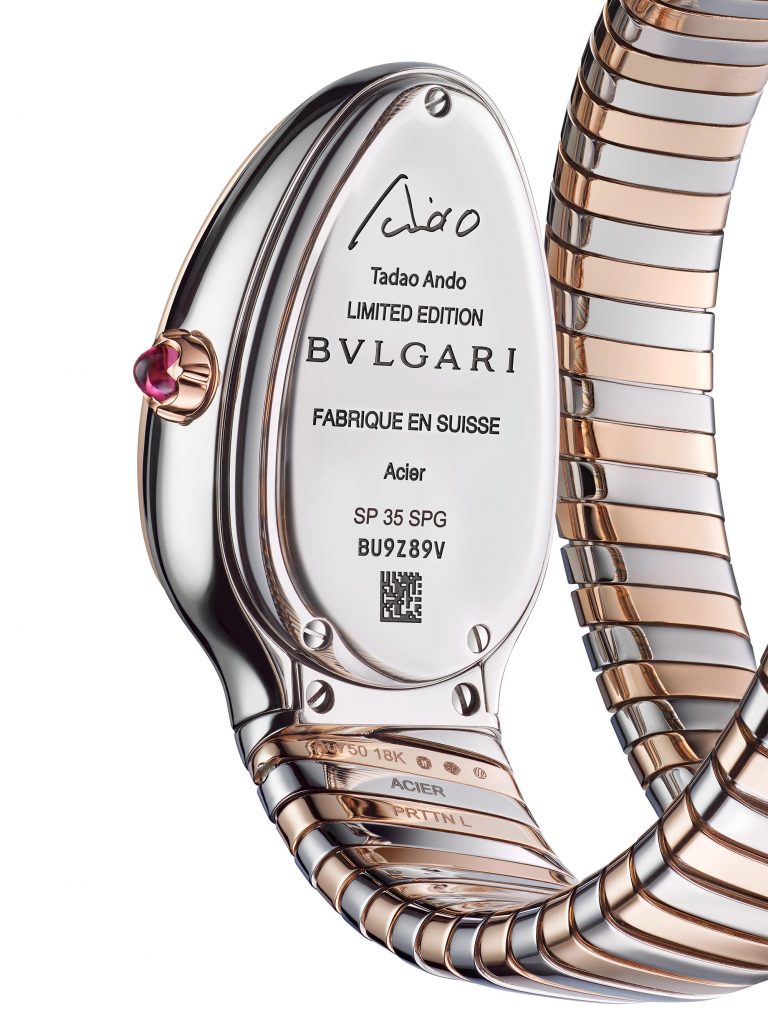
The idea of Tadao was to talk about the seasons and the seasons’ colors. Bulgari is the master of color gemstones.
But it was not so easy to find the real connection between Bulgari, Serpenti, nature and Tadao Ando. The previous projects were more dedicated to the aesthetic of Tadao Ando. His Octo looks like a small piece of architecture with the same kind of aesthetics that you find on a concrete building, made by Tadao.
On this watch, the concept, the idea, was more philosophical.
So at a certain moment, I start to think about this: that we make the dial with artistic stones, which are a natural element in essence.
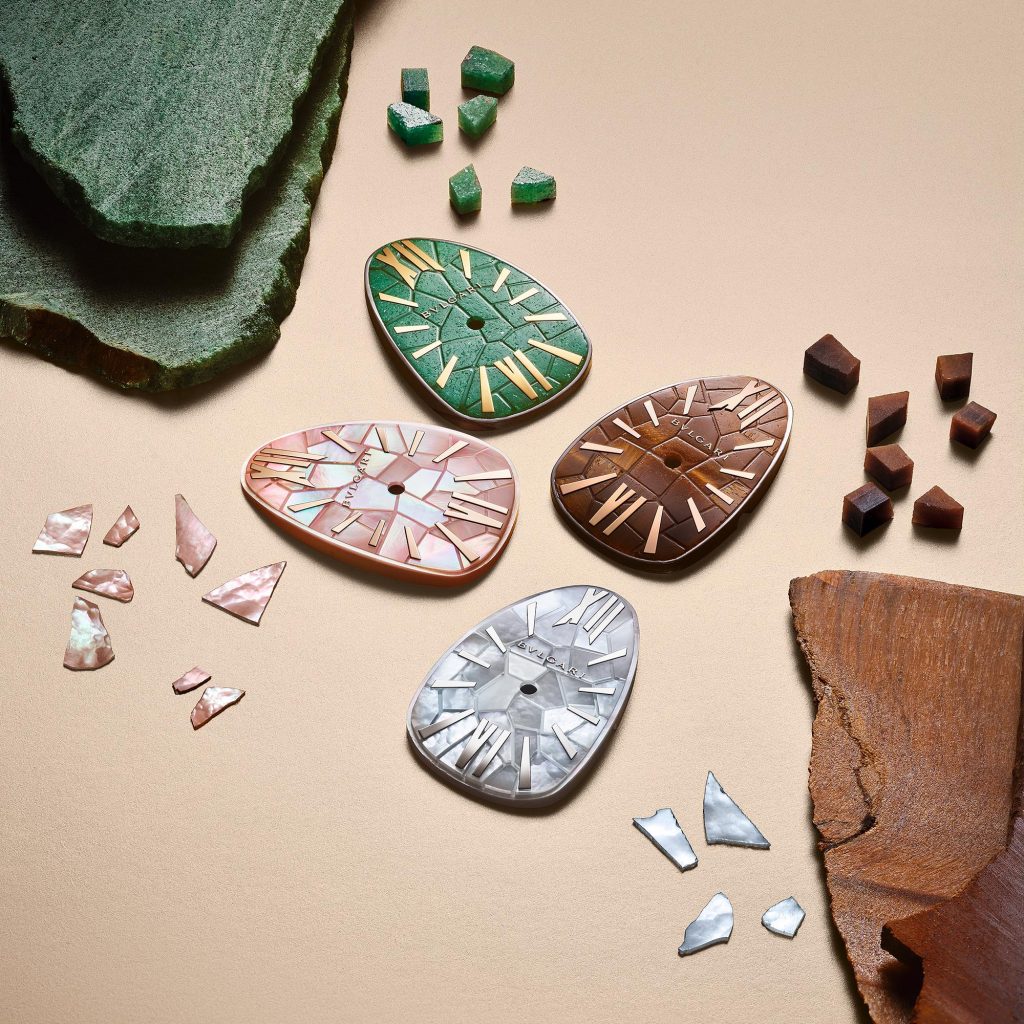
When we buy a part of a stone, to make a dial, we can use just a portion of the stone. We are obliged to cut the original stone many, many times to create the dial. So I started to think, that is a natural element that we threw out; and this is not something that makes sense. In this project, we talk about nature. So the idea that we don’t want to throw out any natural elements was very interesting for Tadao.
The idea was that in this way, we can play with, say, the history of Italian mosaics – Florentine mosaics made with art stones and marble, for example. And adding something very close to the Kintsugi technique in Japan (the art of putting together broken pottery pieces with gold – a metaphor for embracing flaws and imperfections). The remade object, it’s even more precious than when it was new.
So I say, guys, it looks like an Italian mosaic as a design motif. We are talking about natural gemstones. Tadao wants to talk about nature, so we don’t want to throw out this part of the natural gem. We have to put this concept all together and we have to make a dial.

The problem of this particular watch is that the dial is curved, not flat. So we can only accept a certain dimension because otherwise the dial may become crazy and it’s makes no sense with many big and small pieces together, and we can only accept a certain range of colours because otherwise, again, it looks like a Harlequin.
It was not so easy to find the right stones. The green aventurine was the most difficult one because it contains a lot of straight lines going in a thousand directions. In the end, you don’t have the perception of a green forest. So we moved to natural green aventurine.
The most beautiful one for me is the “aki” with the tiger eye that looks like a leaf on the (autumn) floor. It was obvious to choose the mother of birth (What) for the winter season. For spring, it is mother of pearl with shades of pink like cherry blossoms blooming.
ISOCHRONO: So you had to be very selective about choosing the right stones because of the natural flow (inherent qualities) of the stones.
Yeah, exactly. As you can see, each dial has different compositions of stone fragments that make up each dial. The colors and shades of stones vary, making each dial unique and individual.
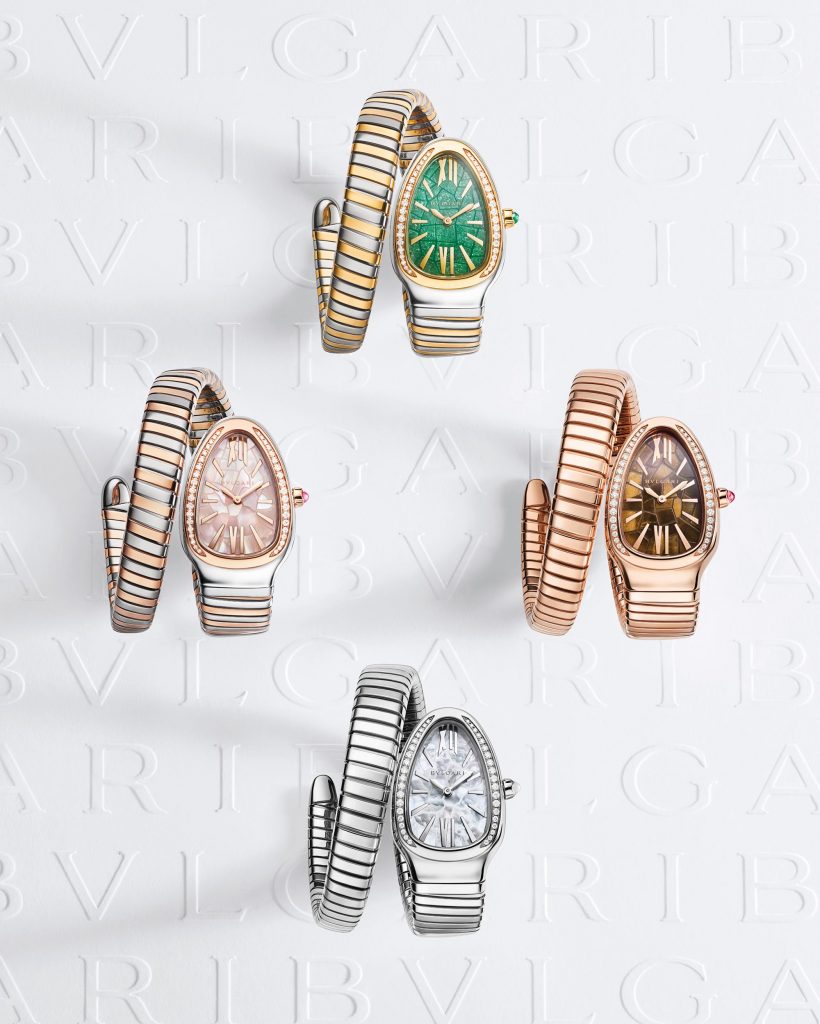
I don’t remember how many trials there were about the different shades. Today we are very happy about this collection. Four limited editions. Summer (natsu): two tone yellow gold and steel bracelet and case with green aventurine dial. Autumn (aki): rose gold case and bracelet with tiger’s eye dial. Winter (fuyu): steel case and bracelet with white mother of pearl dial. Spring (haru): two tone rose gold and steel case and bracelet with pink mother of pearl dial.
Tadao was always in touch and connected to each aspect of this project – hard as it is to reach him because he travels so much and is very busy – so he is very happy to have his influence on the manufacture, the design, and even the packaging for this watch.
Thank you for your time and for sharing your ideas and inspirations creating this year’s watches!


